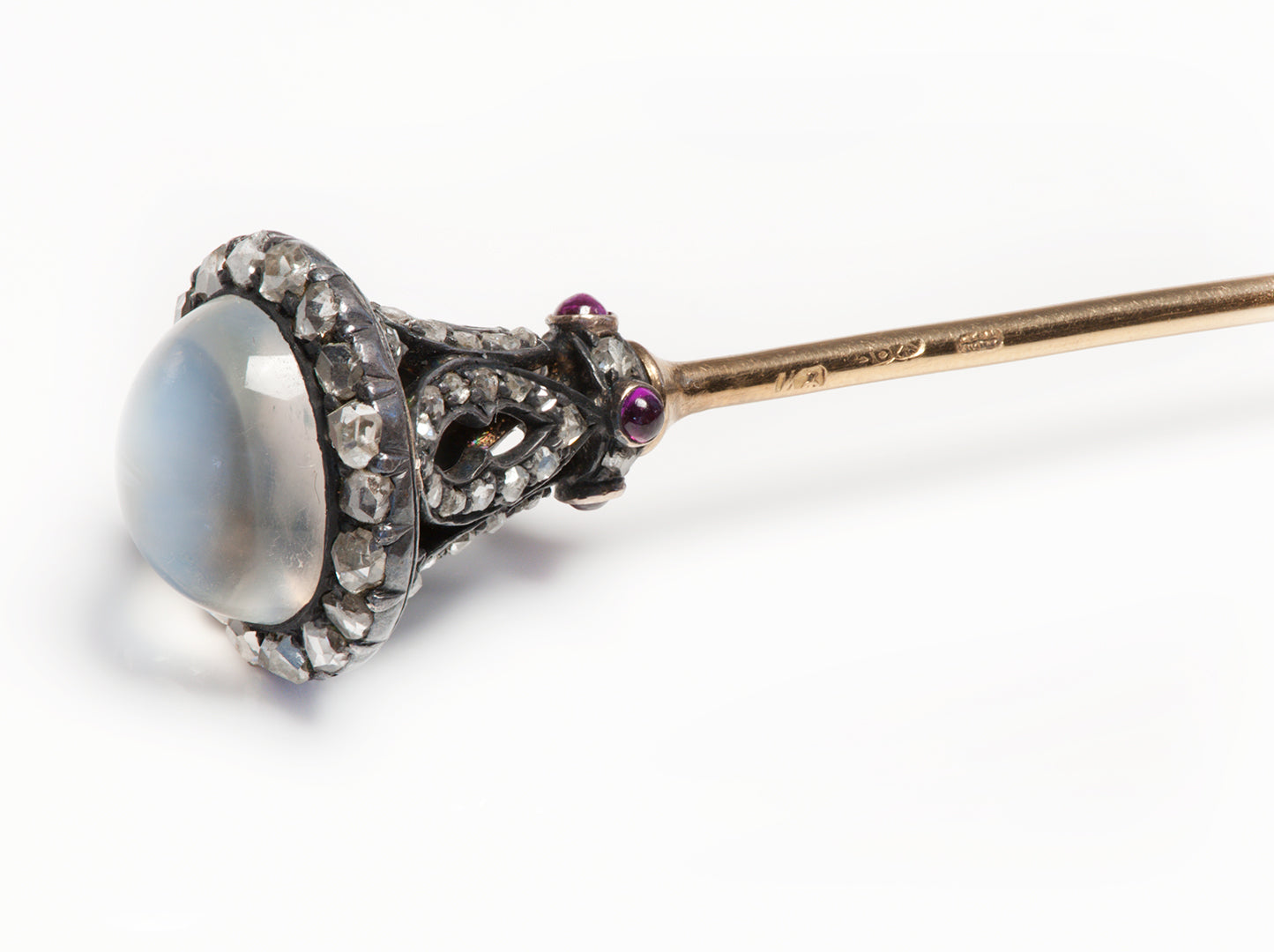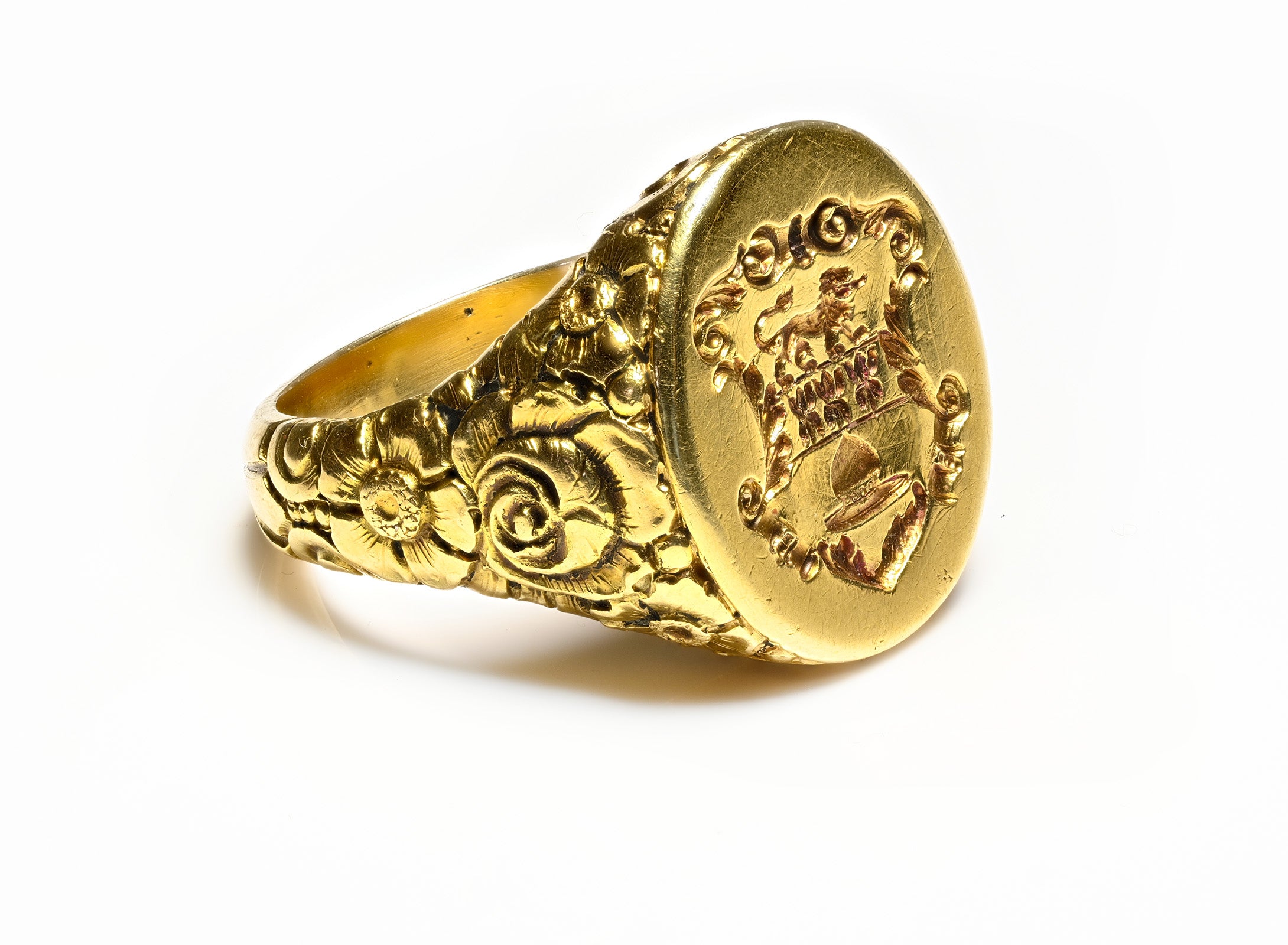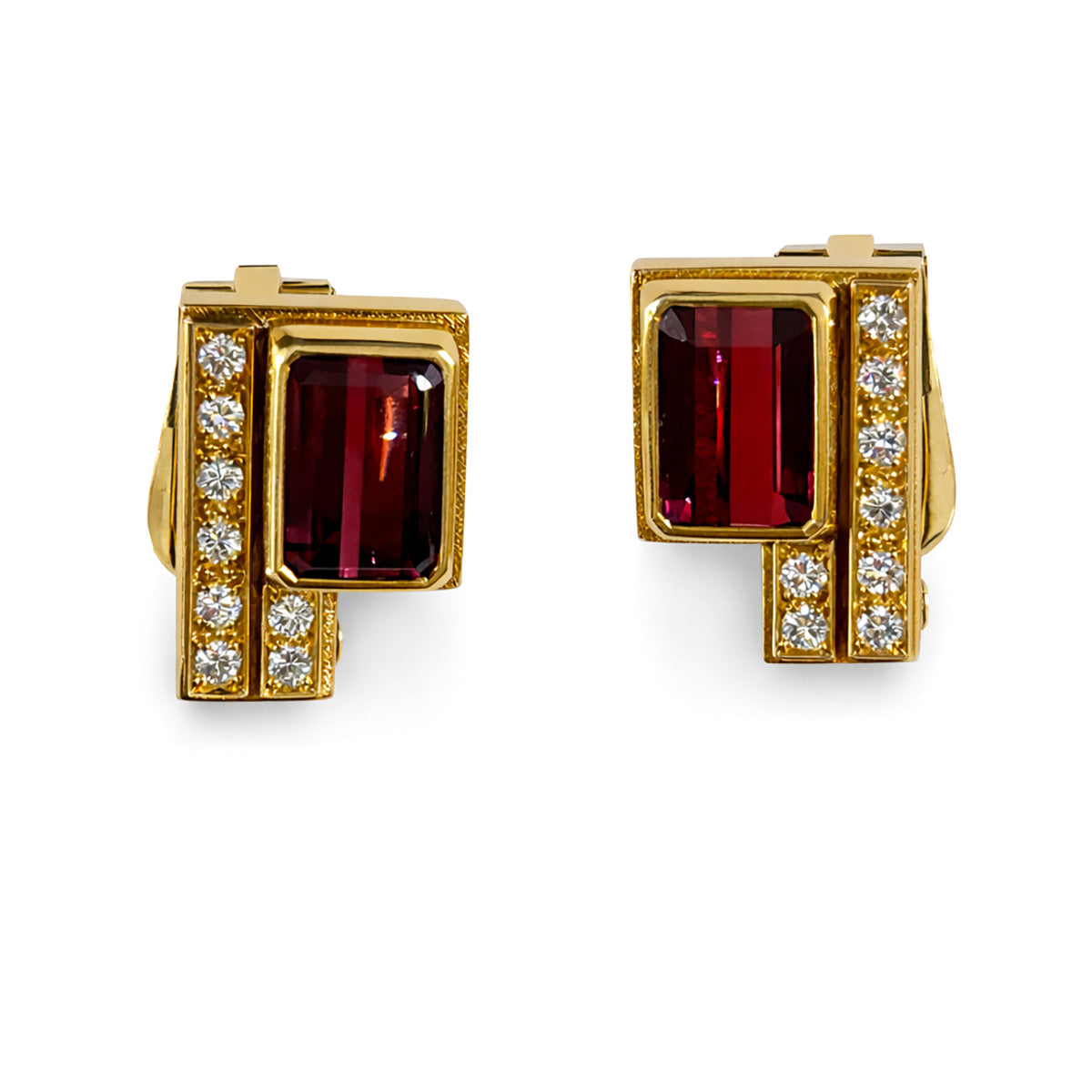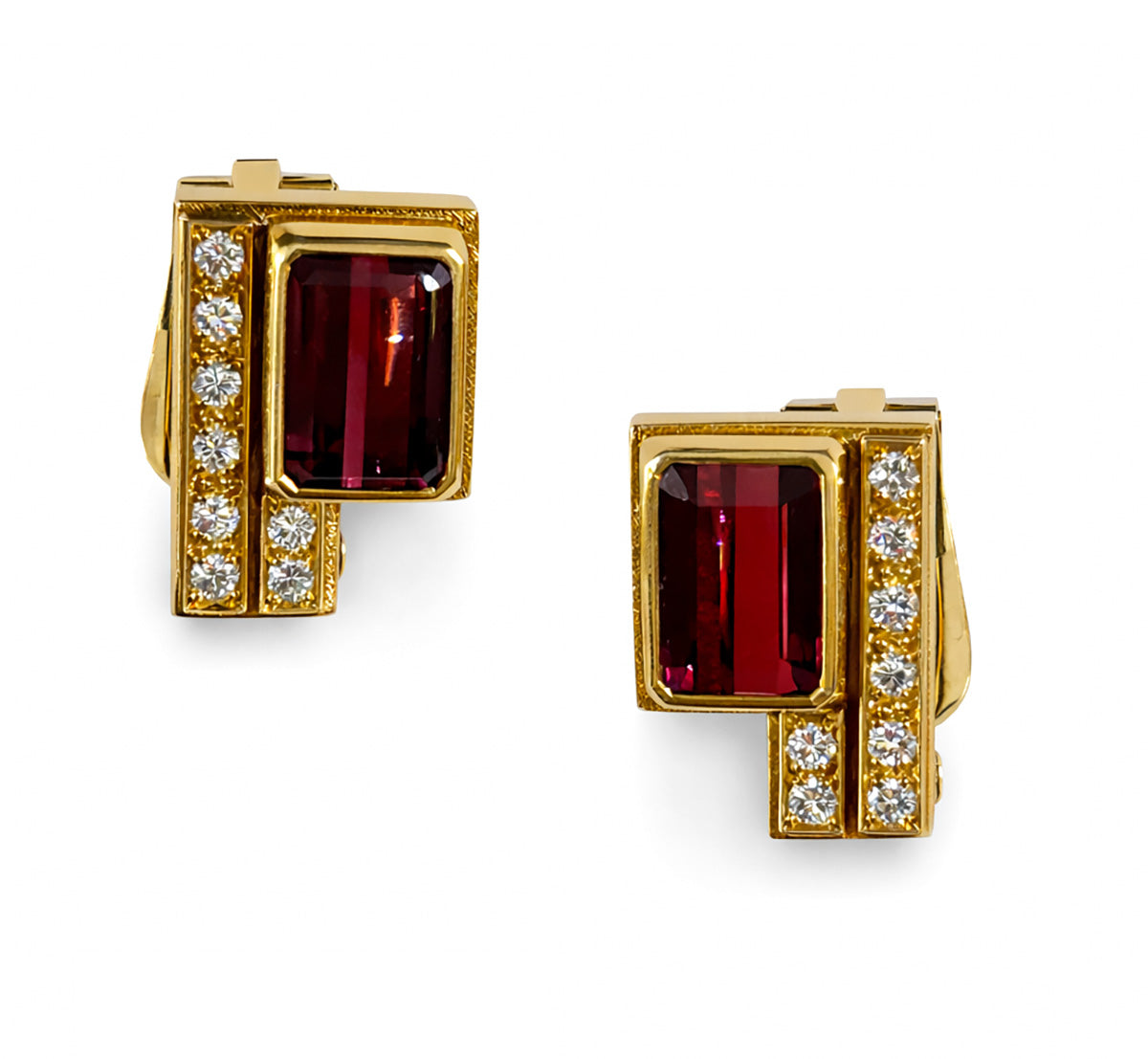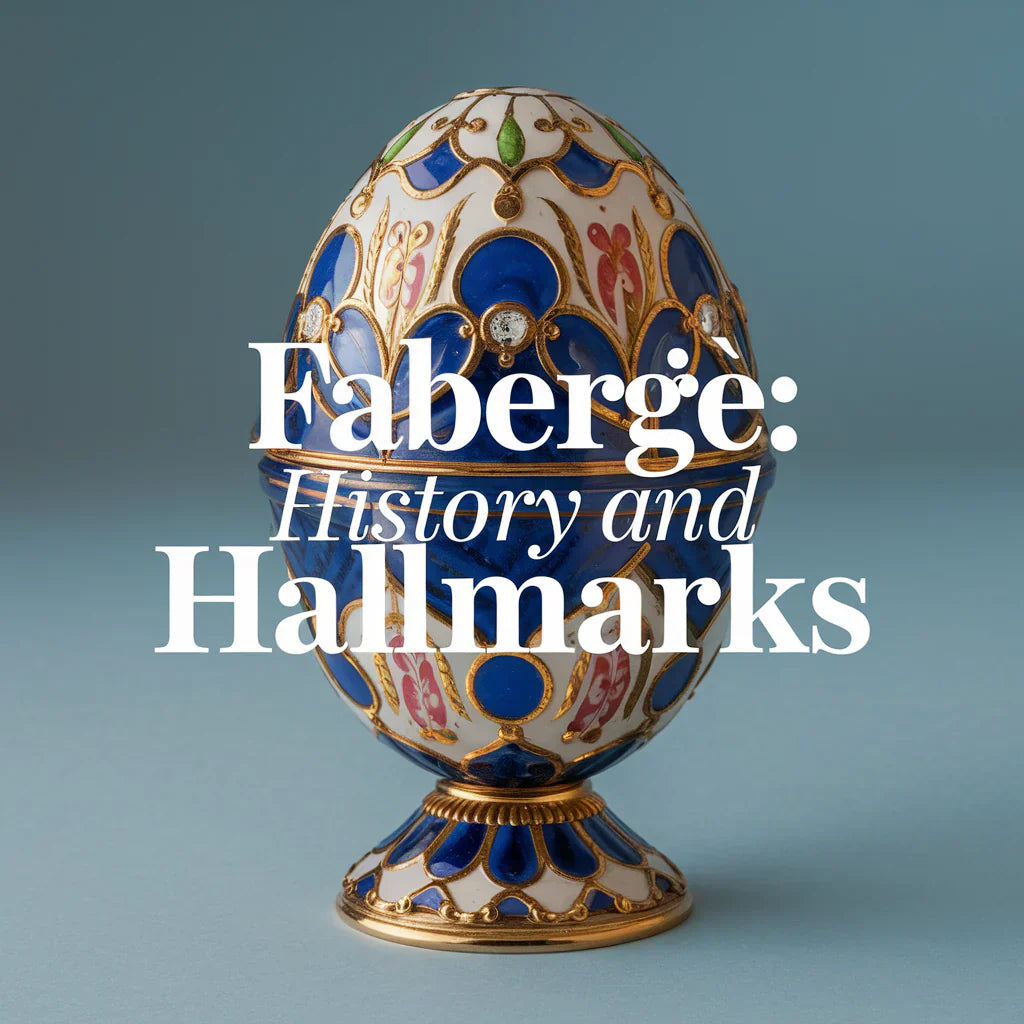
The Fabergé Workmasters and Their Hallmarks
When we hear the name Fabergé, images of dazzling Imperial Easter eggs, enameled objets d’art, and opulent jewelry come to mind. But behind each exquisite piece was a team of highly skilled artisans known as the Fabergé work masters.
These work masters transformed the creative visions of Carl Fabergé into works that redefined luxury and artistry in jewelry.
Known for their distinctive hallmarks, each work master contributed a unique expertise to Fabergé's creations, merging Russian heritage with European sophistication. This blog dives into the iconic Fabergé work masters, their hallmarks, and the legacy they left behind.
The Origins of Fabergé and the Role of the Work Masters
Carl Fabergé (hallmark "КФ") took over his father Gustav Fabergé's jewelry workshop in St. Petersburg in 1872. It was not until Carl received the official title of Supplier to the Court of His Imperial Majesty Tsar Alexander III in 1885 that Fabergé began its journey to international acclaim. The Tsar commissioned Fabergé to create a gold egg for his wife, Empress Maria Feodorovna, which marked the beginning of the celebrated Imperial Easter eggs.
Among Fabergé’s most enthusiastic patrons was Queen Alexandra of Britain, sister to Empress Maria Feodorovna, who frequently exchanged Fabergé objets d’art as gifts with her family.
Her husband, King Edward VII, even commissioned miniature jeweled models of animals from the Sandringham estate, further expanding the royal collection. Their son, King George V, and his wife, Queen Mary, acquired some of Fabergé’s most famous creations, including the Colonnade Egg Clock, the Basket of Flowers Egg, and the Mosaic Egg.
Elsewhere in Europe, Fabergé’s reputation flourished. Kaiser Wilhelm II of Germany owned several Fabergé objets d’art, including enamel and silver photograph frames, which he received as diplomatic gifts from Tsar Nicholas II.
In Denmark, the close ties between the Russian and Danish royal families led to the presence of Fabergé pieces in the Danish royal collection, particularly those once belonging to Empress Maria Feodorovna, a devoted patron of the jeweler. Some of these items are now displayed in the Fabergé Chamber at Amalienborg Palace.
Each piece produced under Fabergé’s name embodied the brand’s commitment to superior craftsmanship and artistry. However, behind these luxurious items were the talented hands of Fabergé’s work masters, each leaving their mark in the form of personal hallmarks stamped on every piece they crafted.
Carl Faberge Moonstone Sapphire Diamond Stick Pin
These artisans elevated Fabergé’s vision, producing pieces that weren’t merely jewelry but masterpieces of decorative art. Their hallmarks continue to act as a seal of authenticity, allowing collectors to trace a piece back to its creator and its place within Fabergé’s storied legacy.
Meet the Master Artisans Behind Fabergé’s Success
Mikhail Perkhin (Michael Perchin) – Hallmark: “MP”
Mikhail Perkhin was Fabergé’s chief work master from 1886 to 1903, the golden period during which many of the most iconic Imperial Easter eggs were created. Born to a family of peasants, Perkhin rose to prominence through exceptional skill and dedication. Under his leadership, Fabergé’s workshop crafted celebrated pieces like the 1894 Renaissance Egg and the Red Cross Egg.
Known for his brilliant use of color and enamel, Perkhin’s hallmark "MP" is a signifier of high artistry and detail. His works combined Russian and European design influences, laying the foundation for Fabergé’s signature style. Collectors consider Perkhin’s pieces some of the most valuable and sought-after due to their refinement and connection to the Imperial family.
Henrik Wigström – Hallmark: “HW”
Following Perkhin’s death in 1903, Henrik Wigström took over as chief work master, a position he held until the Fabergé workshops closed in 1917. Wigström’s creations were marked by vivid colors, intricate details, and luxurious enameling, a skill that made him a key figure in Fabergé’s imperial commissions.
Pieces like the Mosaic Egg and the Twelve Monograms Egg showcase his meticulous attention to color and texture. Wigström’s hallmark, "HW," represents some of the last pieces Fabergé produced before the Russian Revolution, making them highly prized among collectors and historians.
August Wilhelm Holmström – Hallmark: "AH"
August Wilhelm Holmström was a distinguished Finnish silver- and goldsmith, renowned for his significant contributions to the House of Fabergé. His work is revered for its remarkable craftsmanship and intricate detail. Following his passing in 1903, his son, Albert Holmström, upheld the family legacy, preserving the exceptional standards set by his father.
August Holmström – Hallmark: “AH”
August Holmström, Son of August Wilhelm Holmström, served as a chief jeweler known for his skill with gemstones. Holmström’s continued to use his father’s hallmark, "AH." and adorns exquisite jewelry pieces that balanced Fabergé’s Russian roots with European sophistication.
His craftsmanship in gemstone setting and intricate metalwork made him an essential contributor, especially in Fabergé’s early years. He was also involved in designing gifts and commissions for the nobility, with work noted for its elegance and technical precision.
Julius Rappoport – Hallmark: “IR” or (“IP” in Cyrillic)
Julius Rappoport was Fabergé’s renowned master silversmith, responsible for creating lifelike sculptures and silverware. Born in Prussia, he brought with him a realistic approach to his designs, particularly his animal sculptures and silver figurines. His hallmark, “IP” or “ЮР” in Cyrillic, is associated with meticulously crafted silver objects. Rappoport’s pieces frequently became diplomatic gifts, showcasing Fabergé’s ability to transform everyday items into remarkable works of art.
Erik August Kollin – Hallmark: “EK”
Erik Kollin, a pioneer among Fabergé’s early workmasters, specialized in silver items and practical pieces. His hallmark, "EK," is found on Fabergé’s first silver creations, many of which had clean lines and a classical Russian aesthetic. Kollin’s creations are known for their functional beauty, adding Fabergé’s touch to items like cigar cases and tea sets. His work was instrumental in establishing Fabergé’s early reputation for blending utility with luxury.
Carl Fabergé Gem-Set Cufflinks
Feodor Afanasiev – Hallmark: “FA”
Feodor Afanasiev’s hallmark “FA” is synonymous with functional silver items that retained Fabergé’s high standards of elegance. His designs incorporated elements of Russian folk art, celebrating cultural heritage in his works. Afanasiev’s focus on creating luxury items for daily use showcased Fabergé’s philosophy of bringing art into everyday life. His work is particularly valued among collectors of functional Fabergé silver items.
Anders Nevalainen – Hallmark: “AN”
Known for his expertise in guilloché enamel, Finnish work master Anders Nevalainen crafted colorful, shimmering surfaces that elevated Fabergé’s smaller objets d’art. His hallmark, “AN,” is seen on some of Fabergé’s most admired enameled items, such as frames and boxes. Guilloché enameling, an engraving technique over which enamel is layered to create a radiant, jewel-like effect, was a Fabergé specialty perfected under Nevalainen. His work remains highly prized among collectors for its quality and visual appeal.
Viktor Aarne – Hallmark: “VA”
Another Finnish master, Viktor Aarne specialized in personal accessories, including elegant snuff boxes and small decorative pieces. His hallmark, “VA,” is frequently found on Fabergé’s finest miniatures, each bearing exquisite guilloché enamel designs. Aarne’s work represents the height of Russian Art Nouveau, bringing together innovative design and timeless craftsmanship.
Gabriel Niukkanen – Hallmark: “GN”
A later addition to Fabergé’s team, Gabriel Niukkanen was known for creating beautiful enameled pieces. His hallmark, “GN,” is often found on jewelry and decorative items, with a focus on bright enamel colors and refined finishes. Niukkanen’s contribution continued the Finnish influence in Fabergé’s enameling department, maintaining the firm’s dedication to quality and beauty.
Johann Victor Aarne – Hallmark: “IA”
Johann Viktor Aarne was involved in the production of small, intricate jewelry items and objets d’art. His hallmark, “IA,” marks pieces that reflect the intimate and personal nature of Fabergé’s decorative items. Aarne’s detailed designs remain some of Fabergé’s most cherished for their delicacy and craftsmanship, illustrating Fabergé’s vision to elevate the ordinary into extraordinary.
The Importance of Hallmarks in Fabergé Collecting
Each Fabergé workmaster left an indelible mark on history through their hallmarks, transforming Fabergé’s vision into reality and elevating each creation to a symbol of imperial Russian luxury. Today, these hallmarks serve as a form of authentication, with collectors eagerly seeking pieces that bear the initials of these legendary artisans.
Fabergé hallmarks not only attest to a piece’s authenticity but also offer insights into its history, period, and even the specific work master responsible. This adds an additional layer of intrigue and value for collectors, historians, and luxury connoisseurs alike. Fabergé’s workmasters set the standard for artistry in jewelry, ensuring that each creation was not just an item but a lasting piece of art.
Fabergé’s Enduring Legacy and the Influence of His Workmasters
Although the Russian Revolution forced Fabergé’s workshops to close in 1917, the legacy of Fabergé’s work masters continues to thrive. Their hallmarked pieces embody a fusion of Russian history, artistry, and luxury that transcends time, making Fabergé a pinnacle of collectible art. The craftsmanship, innovation, and dedication of these work masters transformed Fabergé into a brand synonymous with opulence and refinement, creating heirlooms that have inspired the world of high jewelry for over a century.
Additional Notable Fabergé Work Masters Along with their Respective Hallmarks:
August Frederik Hollming – Hallmark: "A*H"
A Finnish work master celebrated for his exquisite enamel work and small jewelry items.
Feodor Rückert – Hallmark: "FR" ("ФР" in Cyrillic)
A Moscow-based work master renowned for his cloisonné enamel work, often featuring traditional Russian themes.
Anders Mickelson – Hallmark: "AM"
A Finnish work master who crafted gold cigarette cases and small enameled objects.
Hjalmar Armfeldt – Hallmark: "YA" ("ЯA" in Cyrillic)
A Finnish work master known for producing enameled objects for Fabergé until 1916.
Oskar Woldemar Pihl – Hallmark: "OP"
A Finnish work master and grandson of August Holmström, recognized for creating small jewelry items such as tie pins.
Alfred Thielemann – Hallmark: "AT"
A German-born jeweler who produced small trinkets and jewelry for Fabergé.
Wilhelm Reimer – Hallmark: "WR"
Born in Pernau, Estonia, he crafted small enamel and gold objects for Fabergé.
Philip Theodor Ringe – Hallmark: "TR"
From Riga, Livonia, he had his own workshop from 1893, where he made enameled gold and silver objects.
Andrei Karlowitsch Adler – Hallmark: "AA"
A distinguished Russian jeweler and Fabergé work master, His hallmark is found on various pieces, including a Fabergé silver and guilloché enamel pieces.
Stefan Wäkevä – Hallmark: "SW"
A Finnish silversmith whose workshop supplied Fabergé with silverware, primarily tea services, tankards, and bowls.
Alexander Väkevä – Hallmark:"A.W." (1870–1957), Finnish work master, son of Stefan Wäkevä.
Konstantin Väkevä – Hallmark: "K.W." (1868–1902), Finnish work master, son of Stefan Wäkevä.
Soloviev Vladimir/Vassily Fjodorovich – Hallmark: "V.S." ("BC"in Cyrillic)
was a Russian work master that did enamel pieces made for export to UK.
Reimer Wilhelm Karl – Hallmark: "W.R." born in Riga, Livonia / Pernau, Estonia, crafted small enamel and gold objects.
Karl Gustaf Hjalmar Armfelt – Hallmark: "Ya A" in Cyrillic (ЯA) was a Finnish work master known for creating enameled pieces for Fabergé up until 1916.
Each of these artisans brought distinct skills and craftsmanship to Fabergé’s creations, marking their work with unique hallmarks that are now highly regarded in the world of fine jewelry and decorative arts.

